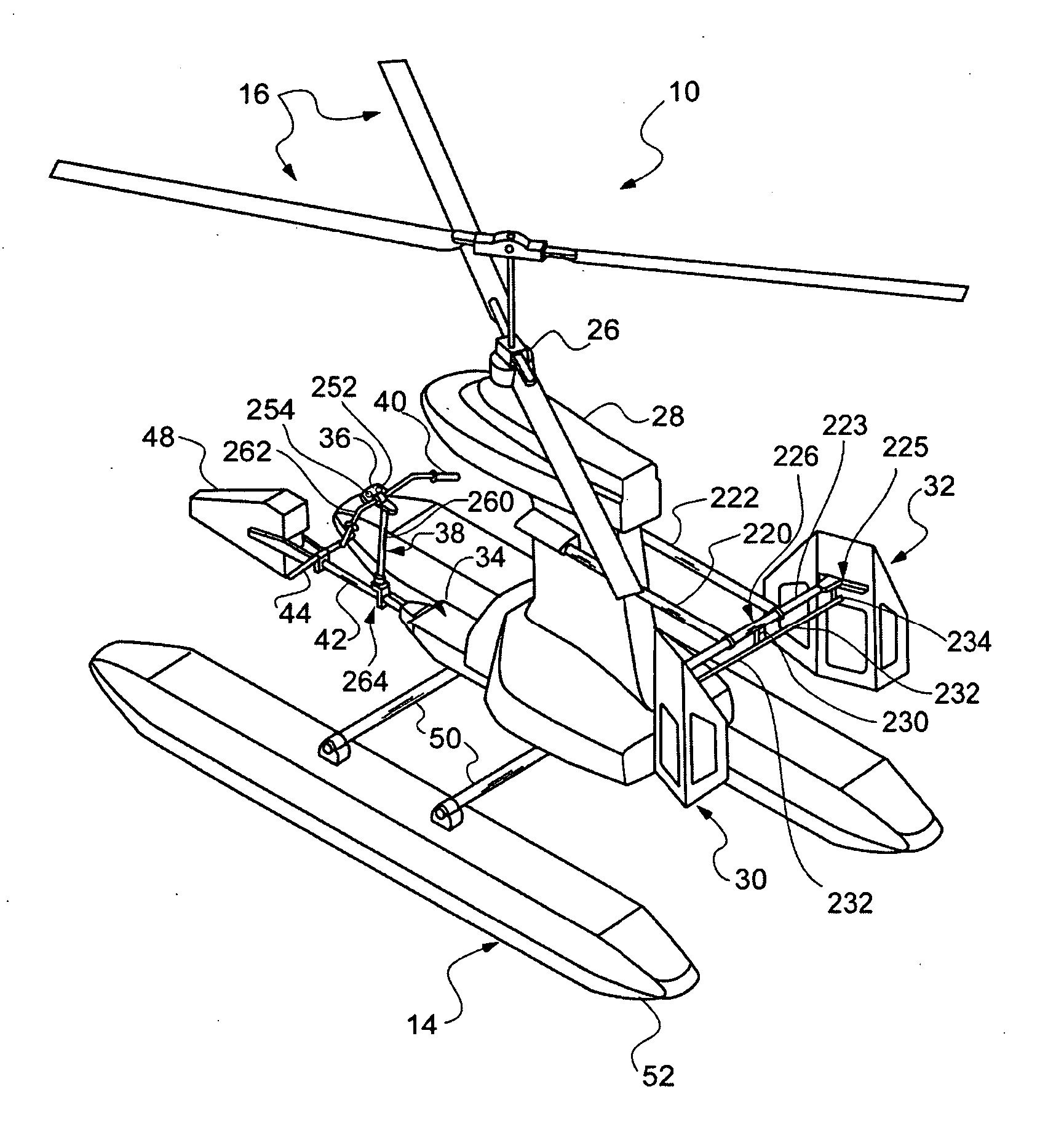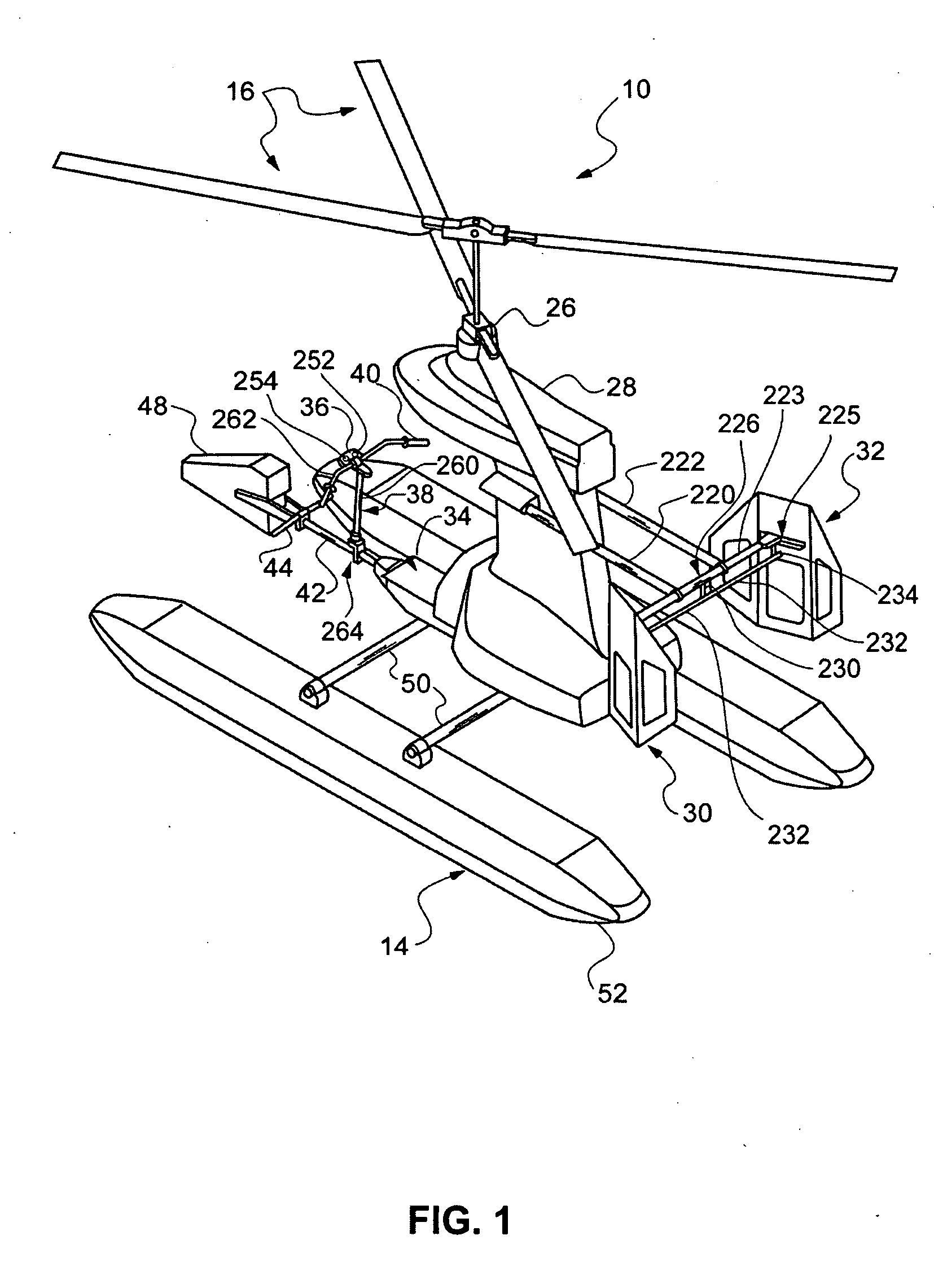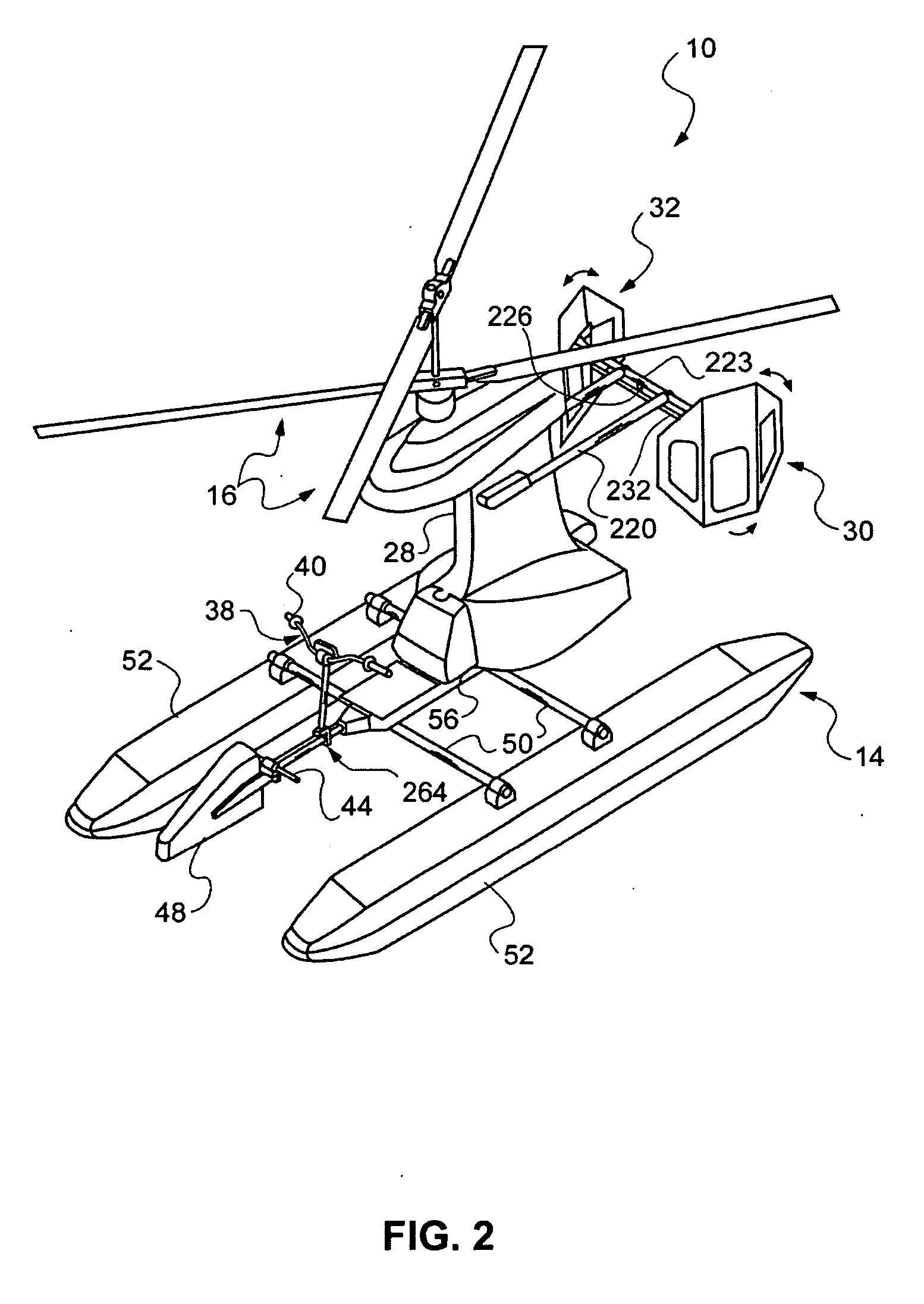Ultralight coaxial rotor aircraft
a coaxial rotor and helicopter technology, applied in the field of helicopter systems, can solve the problems of uncontrollable rotation of the aircraft once it is airborne, limited development of this type of aircraft, and inability to control the rotation of the aircraft, so as to mitigate the damage to the operator, mitigate the impact of a hard landing in a crash, and mitigate the effect of a crash
- Summary
- Abstract
- Description
- Claims
- Application Information
AI Technical Summary
Benefits of technology
Problems solved by technology
Method used
Image
Examples
Embodiment Construction
[0042] Reference will now be made to the drawings in connection with the following detailed description, in which the various elements of the illustrated example(s) of embodiments of the invention will be described and discussed. It is to be understood that the following description is only exemplary of the principles of the present invention, and should not be viewed as limiting of the scope of the invention.
[0043] With reference to FIGS. 1 through 6 of the drawings, the invention is embodied in an ultralight helicopter 10 having a generally L shaped airframe 12 supported by pontoon landing skids 14 while on the ground, and a coaxial rotor set 16 when airborne. A gasoline engine 18 powers the coaxial rotors through a centrifugal and sprag clutch unit 20, drive shaft 22, belt drive transmission 24, and rotor coaxial drive transmission gear box 26. The engine, clutch, drive shaft, and belt drive transmission can be enclosed, either partly or entirely, within a sleek aerodynamic cowl...
PUM
 Login to View More
Login to View More Abstract
Description
Claims
Application Information
 Login to View More
Login to View More - R&D
- Intellectual Property
- Life Sciences
- Materials
- Tech Scout
- Unparalleled Data Quality
- Higher Quality Content
- 60% Fewer Hallucinations
Browse by: Latest US Patents, China's latest patents, Technical Efficacy Thesaurus, Application Domain, Technology Topic, Popular Technical Reports.
© 2025 PatSnap. All rights reserved.Legal|Privacy policy|Modern Slavery Act Transparency Statement|Sitemap|About US| Contact US: help@patsnap.com



